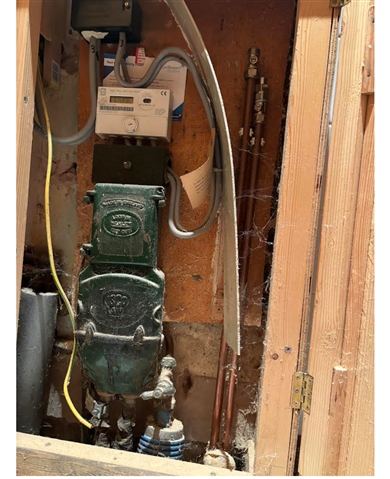Hi I’ve recently moved into a 1930’s property. The electricity supply has been installed on top of the water main. Has anyone seen this set up before? National Grid are saying that the set up isn’t ideal, however are refusing to visit to check on the safety. I have two small children living with me.
Can anyone give an indication of the age of the cutout and wiring? National Grid are saying that it dates from the 1970’s however I think it’s much older than that.

Has anyone seen a set up like this with underground electric and water supplies installed together? The water main has been replaced with poly pipe at some stage.